
Villa Borsani. Photo by Piergiorgio Sorgetti courtesy of Alcova Milano.

Kaleidoscope-o-rama by Bethan Laura Wood for cc-tapis, T4 by Holloway Li for Uma Objects, Vale Lighting System by Caine Heintzman x A-N-D. Photo by Piergiorgio Sorgetti courtesy of Alcova Milano.
“This moment of calm is incredible,” says Joseph Grima, co-founder of Alcova Milano as he sits in the living room of Villa Bagatti Valsecchi, where a storm has temporarily lifted the crowds from the bustling exhibition. Since Grima co-founded the itinerant design platform with Valentina Cuiffi in 2018, they have hosted exhibitions in a bakery, cashmere factory, military hospital complex, and former abattoir. This year’s edition was split between two villas on the outskirts of Milan, making use of their contrasting, grand domestic settings to play up the theatrical nature of the exhibition.
Villa Bagatti Valsecchi, with its vast grounds and an ice house, was built in the 19th century as a summer retreat for a noble Milanese family. A ten-minute walk through town gets you to Villa Borsani, a Modernist, mid-20th century villa designed by Osvaldo Borsani, with lush gardens and a Lucio Fontana fireplace. “From a curatorial point of view, they are perfect in their complementarity because they offer two very different spaces,” Cuiffi says. “At Villa Borsani, we have a lot of collectible design that is in dialogue — but not an easy dialogue — with the rooms of the villa that hold many connotations.” Borsani’s study has been occupied by furniture and interiors studio Supaform’s office in galvanized steel, which represents the “artist’s inner world” through a retro-futuristic installation. While remaining faithful to the purpose of the room, the project disrupts the Modernist language of the space. This approach to site-specific curation, which complements and up-ends the clarity of the design language of the villa, can be seen throughout the exhibition. The kitchen was populated with works by Colombian designer Natalia Criado, who makes brass pieces inspired by pre-Columbian objects, painted with silver and often involving connective canals and joints. In the Borsani bathroom, the tub was filled with technicolor glass forms, a “non-conformist garden” by Sema Topaloğlu, with glass flowers growing from metal tubes, their candy-pink roots sprouting over the edge of the bath.

Villa Borsani. Photo by Piergiorgio Sorgetti courtesy of Alcova Milano.
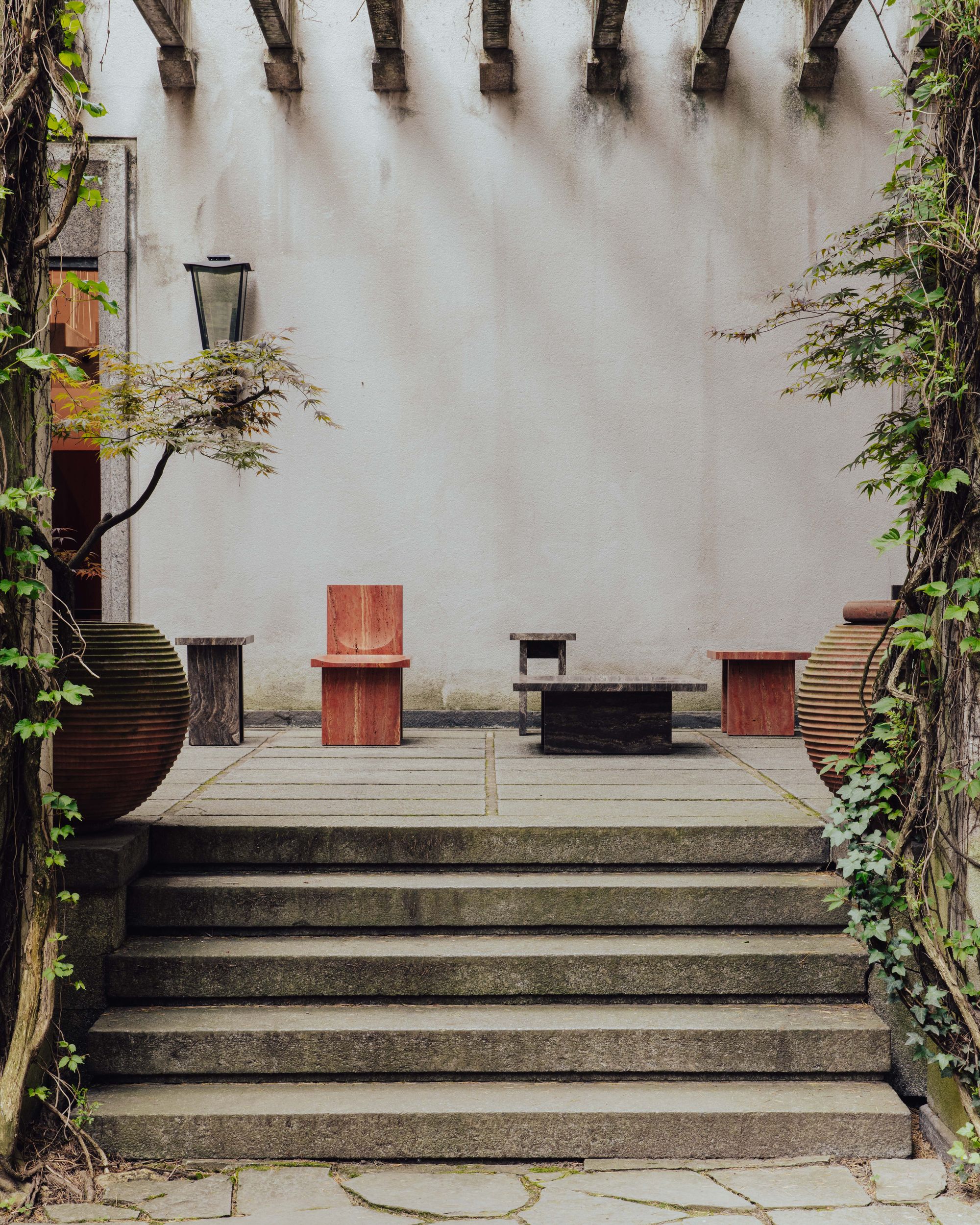
Tom Fereday, Mazer. Photo by Piergiorgio Sorgetti courtesy of Alcova Milano.

Natalia Criado, La Cocina. Photo by Piergiorgio Sorgetti courtesy of Alcova Milano.
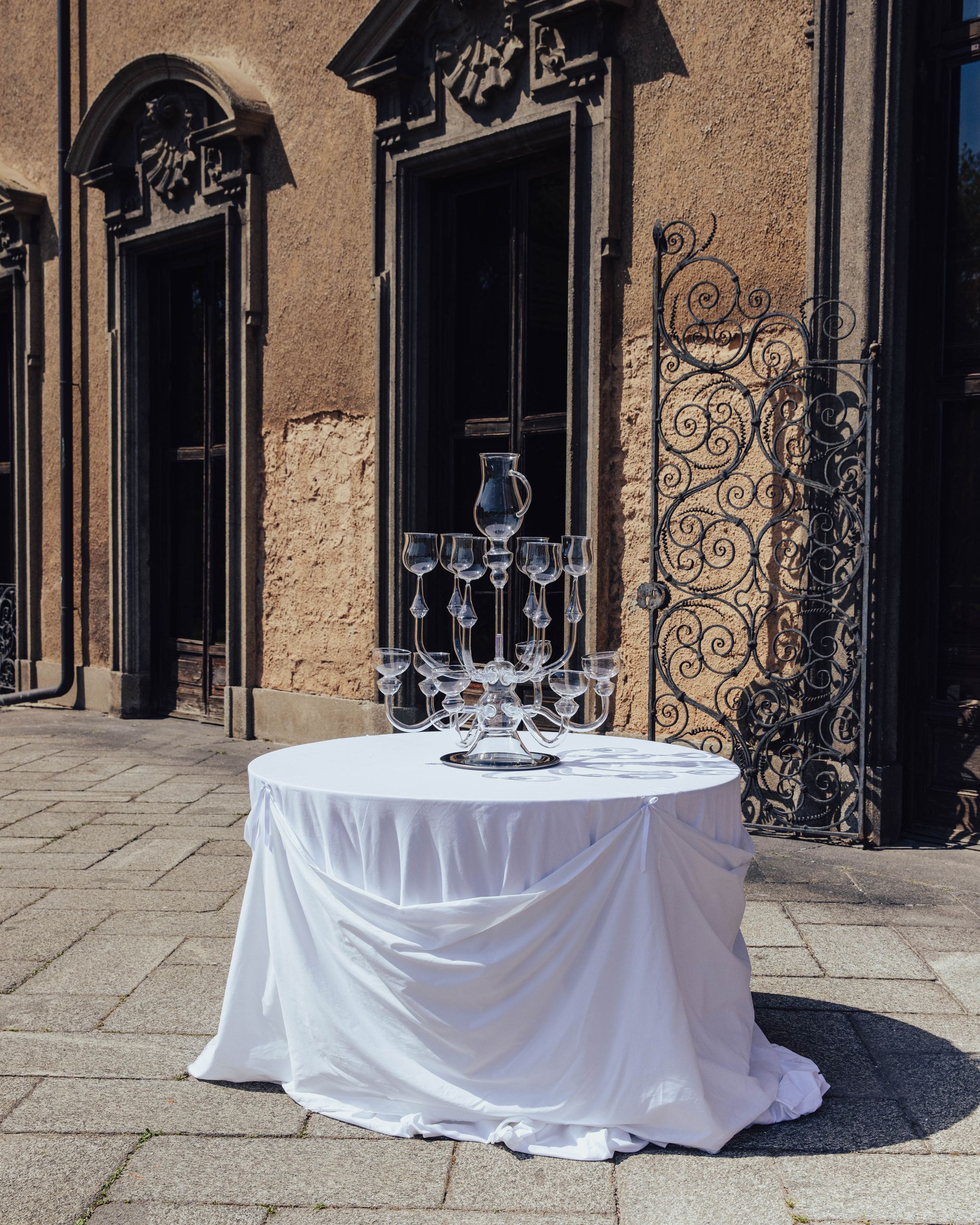
Ylaria Pavone, Dinner’s Ready. Photo by Piergiorgio Sorgetti courtesy of Alcova Milano.
The installation continued at the Villa Bagatti Valsecchi, one of the only points of direct overlap between the two villas, with a display of lights in front of an abstract tapestry. The rooms of Bagatti Valsecchi are grand in scale and architecture, providing ample space for larger projects and semi-standalone exhibitions within the Alcova framework. On entering the villa, you are met with a room filled with what looks like undulating sand dunes, with soft-edged lamps, chairs and tables designed by Harry Thaler balancing among them. The dunes were in fact wood dust, evoking the EconitWood 3D printing process used to make the lights, which repurposes industrial wood leftovers. Swiss design school HEAD Genève showed 2084: Diorama of the Future, based on a speculative (but not so difficult to imagine) scenario where human and non-human explorers endure extreme weather conditions in the cities of 2084. The installation flips the 19th century diorama tradition on its head, stripping the romanticized view on nature out of the scene, and removing the glass that allowed viewers to keep a safe distance from the action. Mostly online gallery Adorno presented Animism, “a banquet of design” whose pieces were intended as fellow guests at a gathering; with jeweled goblets by Szkło Studio, a wax-cast and dipped aluminum chair by Nicolas Erauw, and silver finger attachments by Lilli Malou.
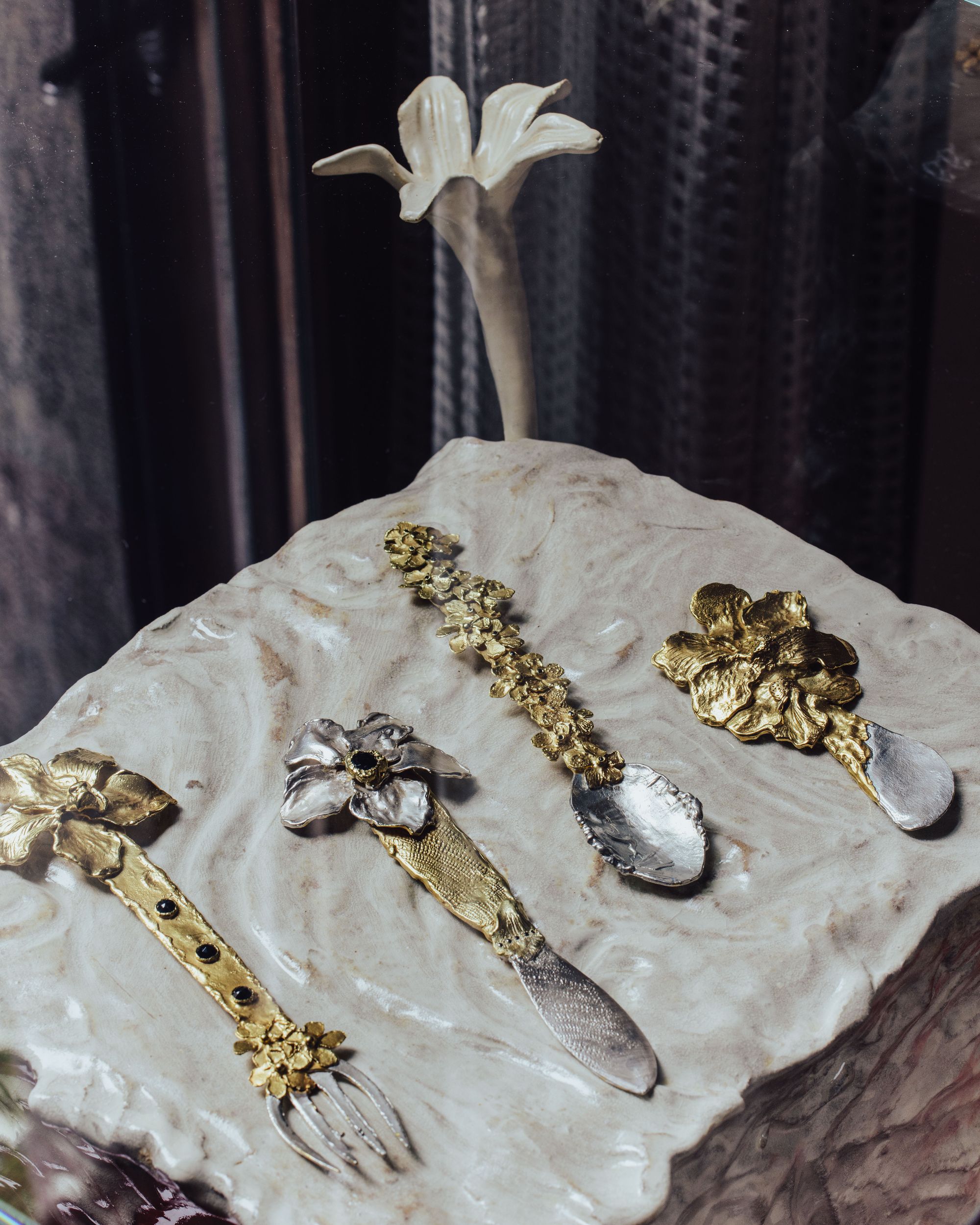
Conie Vallese and Elhanati. Photo by Piergiorgio Sorgetti courtesy of Alcova Milano.
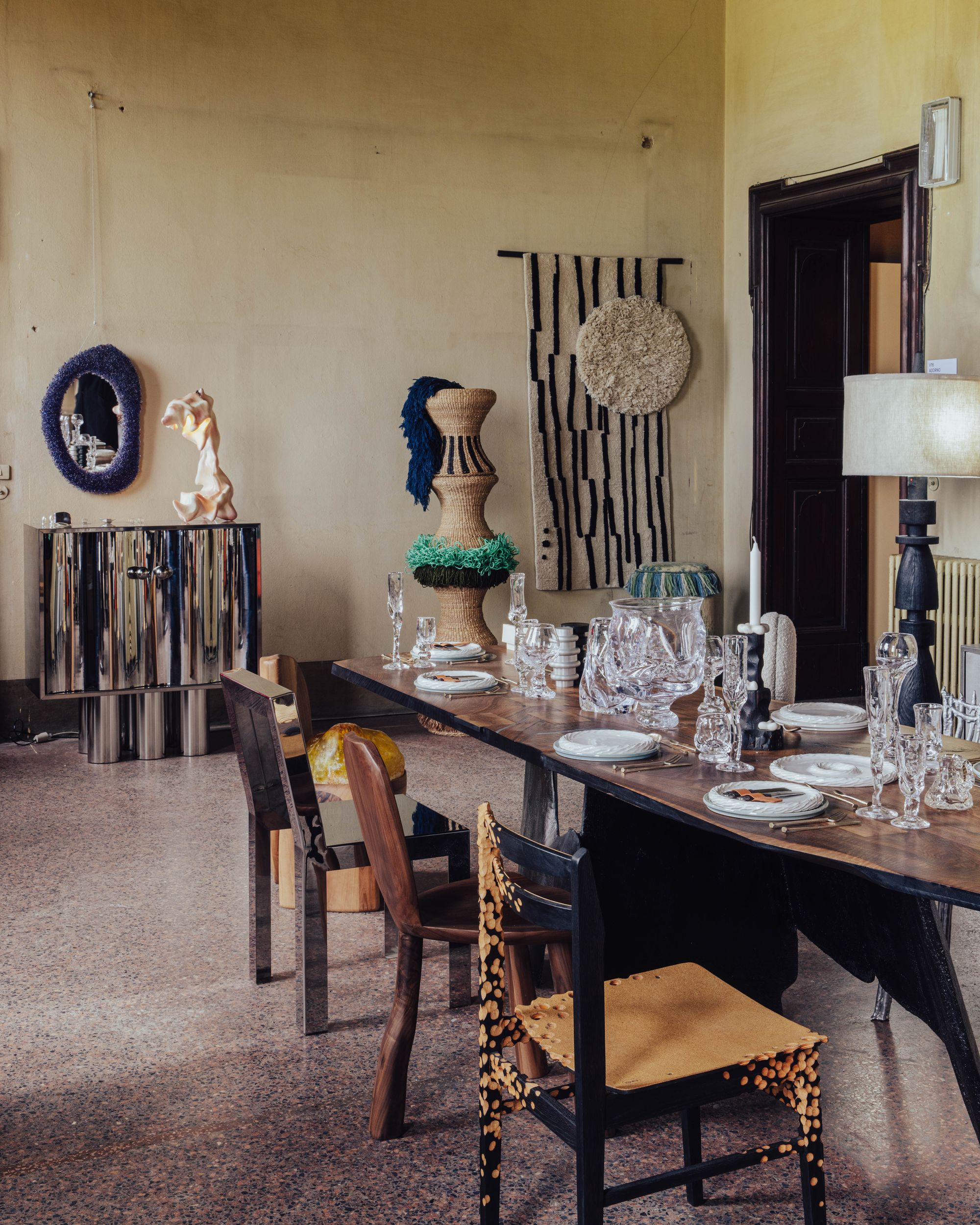
Adorno, Animism. Photo by Piergiorgio Sorgetti by Alcova Milano.

Swedish Girls, Another Fountain. Photo by Piergiorgio Sorgetti courtesy of Alcova Milano.
In the garden, Swedish Girls showed Another Fountain, a project rooted in their research into the history of the water feature as a place to gather. “This is everything a fountain is, and everything it is not, because it has no water, obviously. We would love to have water in it at some point, but we are interested in its social function within public space,” says Mira Bergh Edenbourg. Standing within a dry stone pool, the stepped structure of stainless steel rods invites people to climb, gather, and play like the nymphs that dance over Renaissance fountains. Off beyond the trees is la ghiacciaia, the ice house, where gallery Maniera showed a collection of pieces by architect Junya Ishigami, including dining and rocking chairs, tables, partitions, and lamps. Designed for a domestic setting, some specifically for Ishigami’s mother’s house, the collection — which is made in rattan, stainless steel, leather, glass, and wood — takes on a new character in the strange, cave-like environment of the ice house.
“Putting together an exhibition like this involves a lot of serendipity,” Grima says. “What is important in our selection process and dialogue with people is that there is a certain comfort with creating a theatrical experience.” There is little in the way of branding, explanatory texts, or signage, which is a conscious choice rooted in the belief that design should tell a story on its own. “We need to find ways to bring people into a dialogue with design that are not mediated by the conventional languages of marketing,” Grima says. “It is a form of laziness to rely on wall texts — design should speak for itself.”
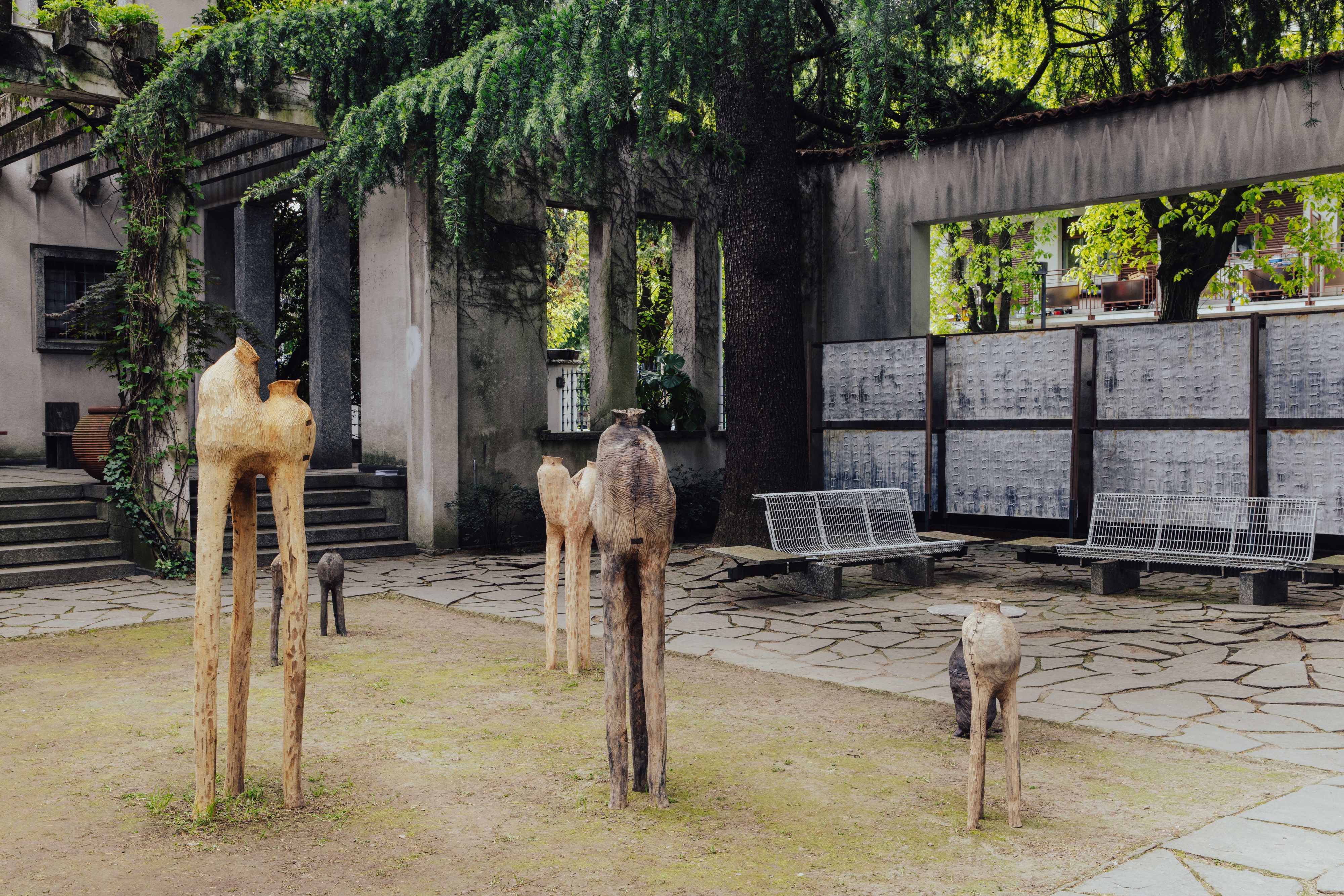
Cengiz Hartmann, Patio. Photo by Piergiorgio Sorgetti courtesy of Alcova Milano.

Gohar World. Photo by Piergiorgio Sorgetti courtesy of Alcova Milano.
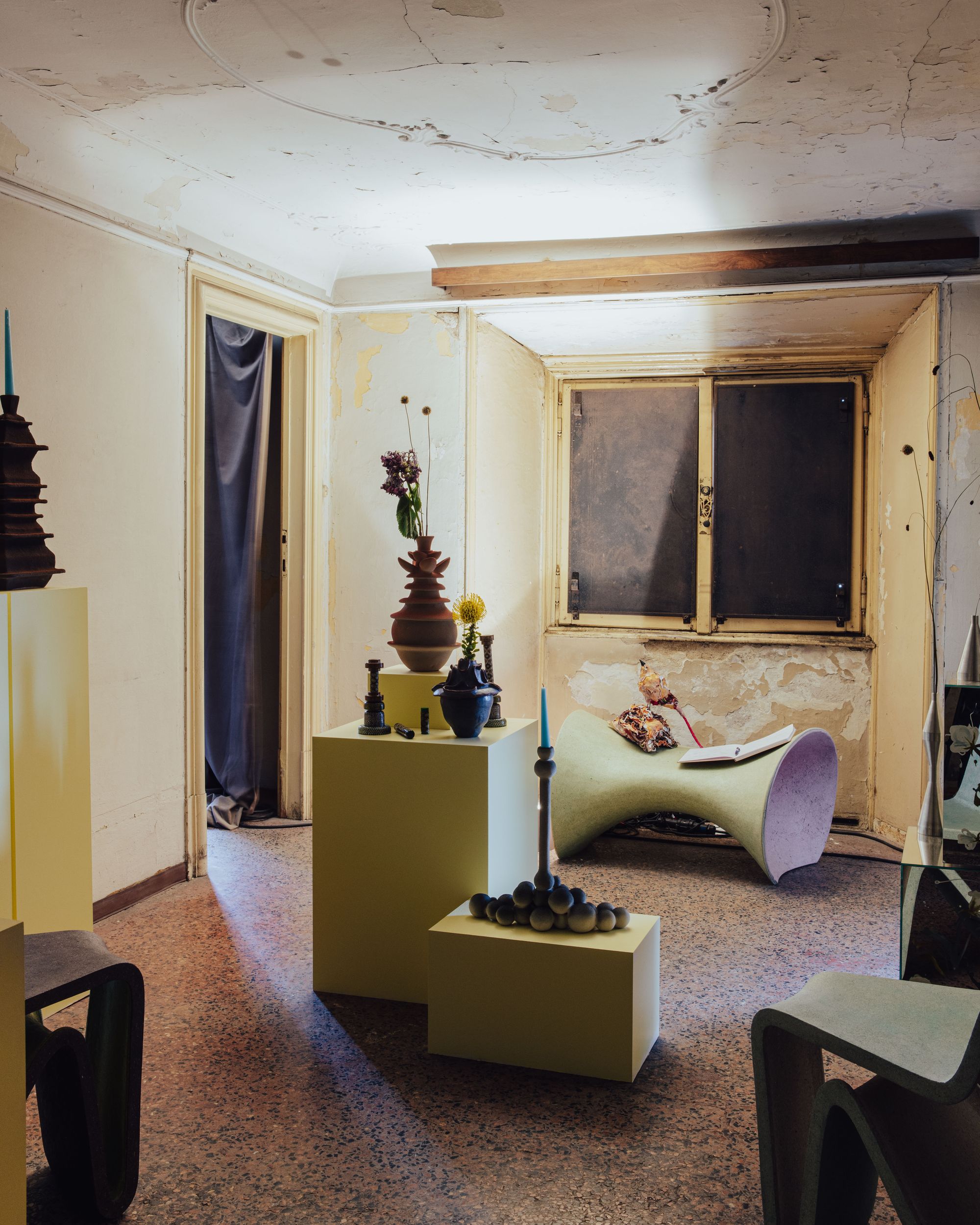
AASSTTIINN, Li-ving room. Photo by Piergiorgio Sorgetti courtesy of Alcova Milano.
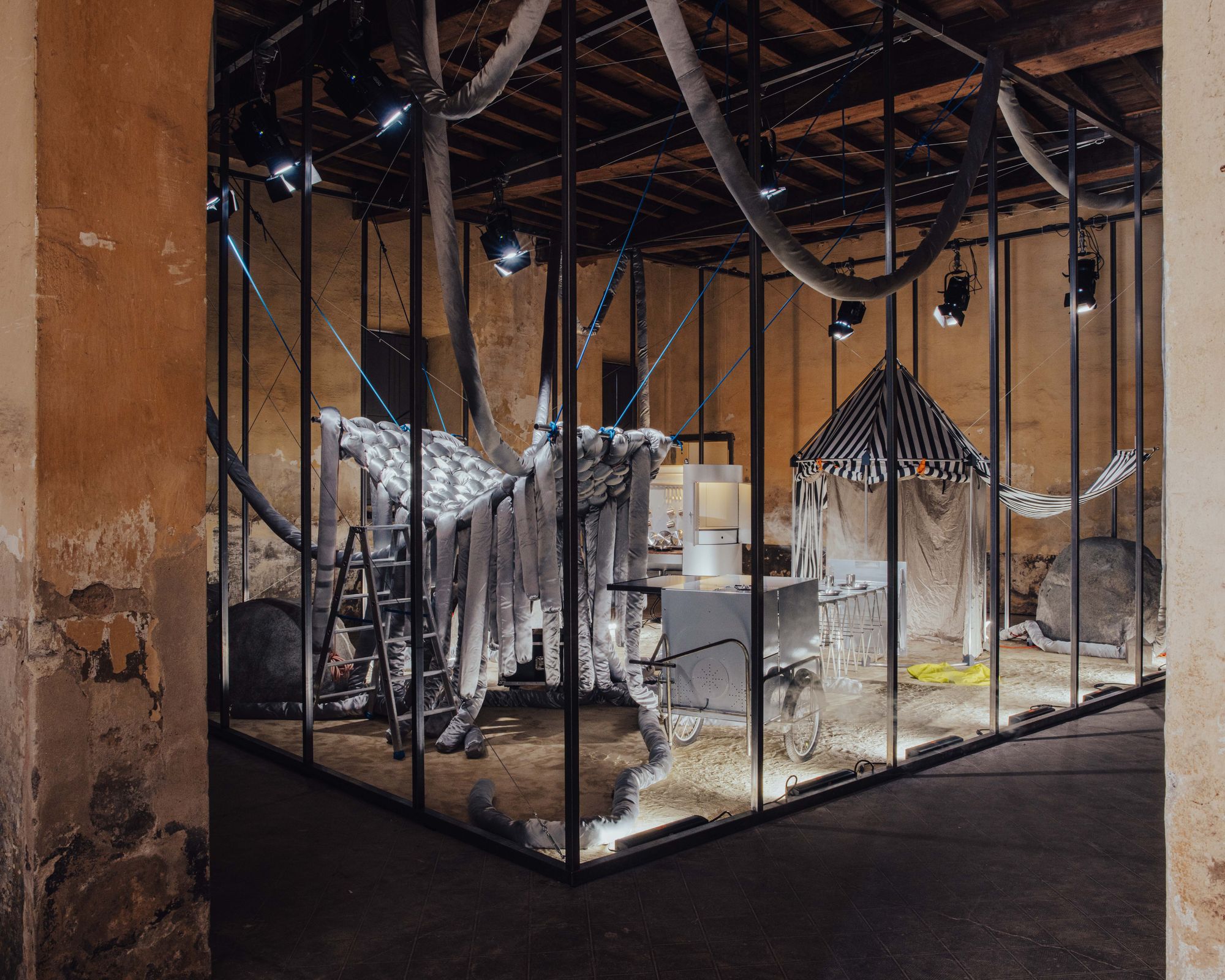
HEAD Genève, 2084: Diorama of the Future. Photo by Piergiorgio Sorgetti courtesy of Alcova Milano.
This refusal of laziness carries through to how Grima and Cuiffi think about the general approach for Alcova, which changes its location every one or two editions. “It is important to keep challenging ourselves and our exhibitors to rethink our own model and our own narrative,” says Grima. “We are all too aware of the impact that the Fuorisalone, and at this point that Alcova has, on the city… If we settled in one place it would quickly distort all aspects of real estate in a way that would be completely against our intentions for this project,” he continues. Fuorisalone, the exhibitions and events dotted across Milan during Salone Internazionale del Mobile, can — like most biennales, design weeks, and art fairs — act as an alien entity, “landing somewhere and taking off again, not really speaking to the city itself,” as Grima describes.
Dropcity, a center for architecture and design that will open formally later this year, began its “self-built” renovations in the warehouse tunnels behind Milan Central Station during Fuorisalone. The project seeks to scale Enzo Mari’s Autocostruzione manifesto “to imagine and transform architectural typologies, facilitating innovative interventions,” establishing a collective space for emerging practitioners to develop and share their work, conduct research, host workshops, and run learning programs. There were 3D printers manufacturing multifunctional wall modules, building façades, and clay architectural elements on a 24/7 automated production line. An in-house developed CNC machine by STREEV Studio was milling timber joints to connect parts without glue or screws, maximizing the material yield from 5000 trees that had collapsed in Milan during a storm in 2023.

Harry Thaler Studio x Econitwood, Printed Nature. Photo by Piergiorgio Sorgetti courtesy of Alcova Milano.
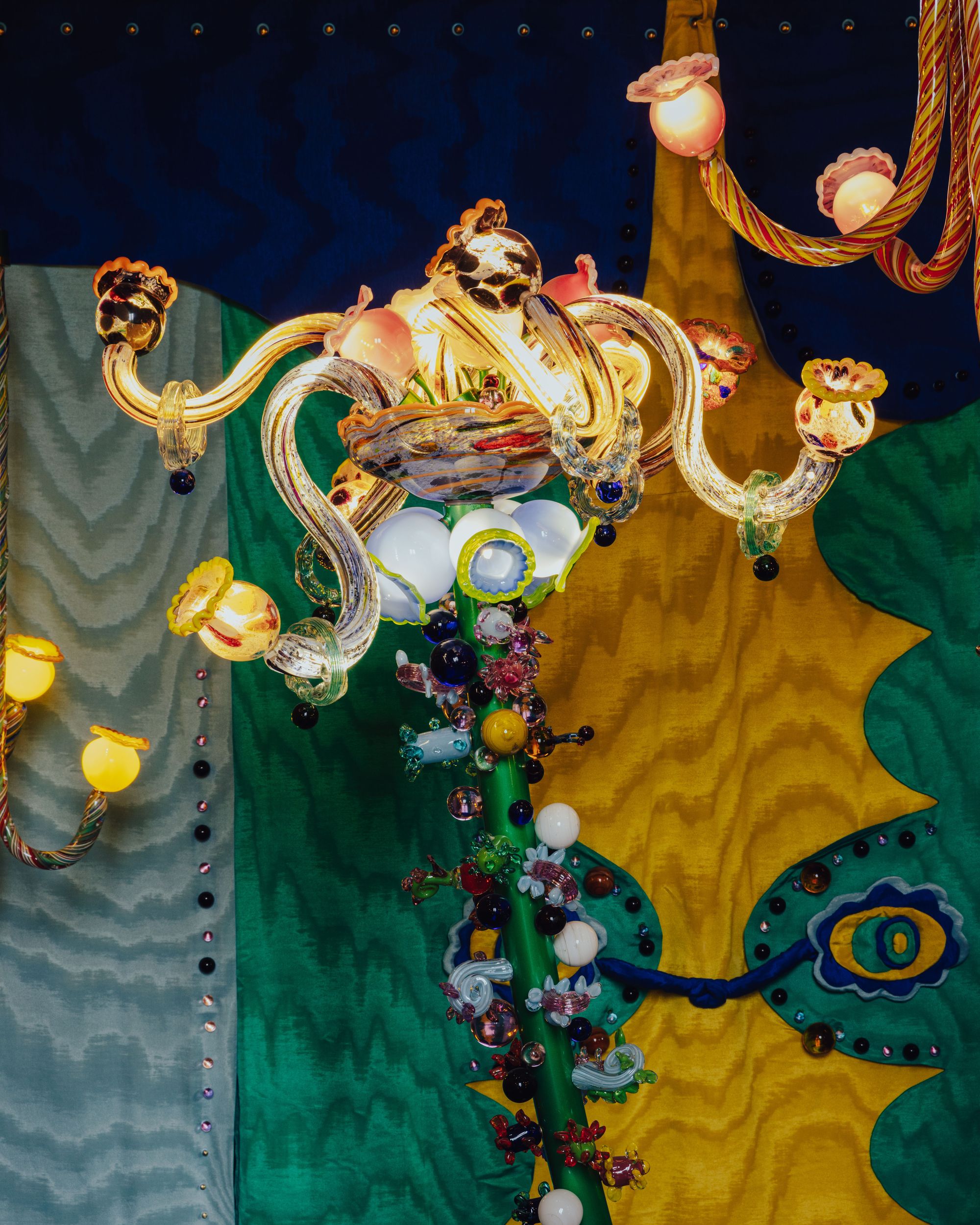
Sema Topaloğlu, Sema’s Firfir / Sema’s World – Non Conformist Garden - Non Comformist Garden. Photo by Piergiorgio Sorgetti courtesy of Alcova Milano.
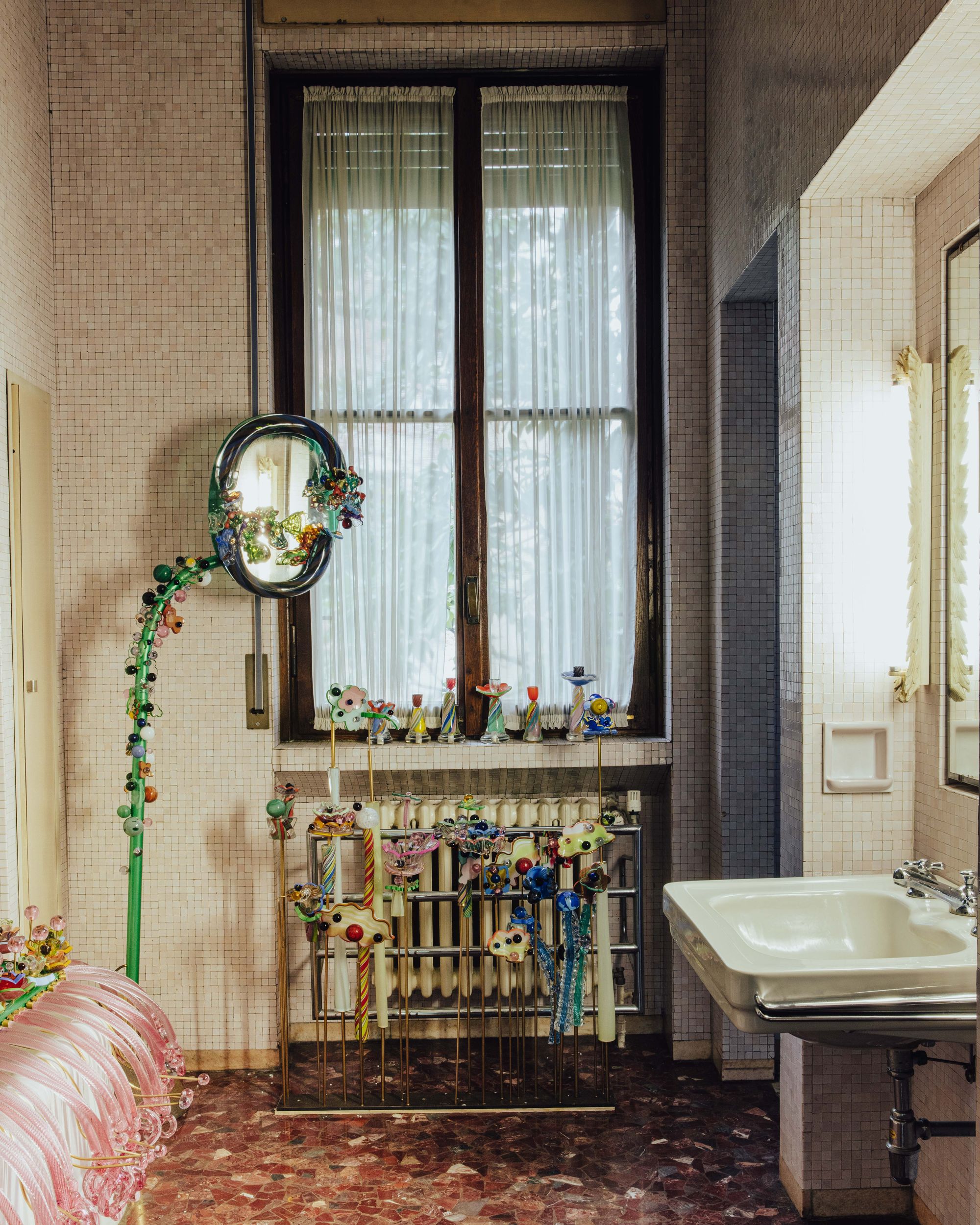
Sema Topaloğlu, Sema’s Firfir / Sema’s World – Non Conformist Garden - Non Comformist Garden. Photo by Piergiorgio Sorgetti courtesy of Alcova Milano.
The active renovations were mixed up with more formal exhibition set-ups, which extended through the warehouse arches behind the train station. Garbage Kids, a collective based between Tbilisi, Georgia, and Tallinn, Estonia, presented a selection of pieces that embody their practice of working in a way that is meaningfully rooted in their surroundings. “We go to forests, searching for fallen trees, or work with leftovers from other workshops in the city. We create these charismatic pieces, which are mostly one-offs,” Nika Gabiskiria tells me. The Spiky Table is one of their many experiments, the hundreds of hazelnut wood spikes that line its legs giving the table its name. “All of our objects have two sides to them, what they represent aesthetically, or what character they are, and the story of the material. In this case, the wood is from my hazelnut orchard. When we prune them, there are a lot of leftovers, which we can use as decorative details. The interior legs are made from Acacia, which had been used as fence posts. The top is a massive piece of walnut that we found on a construction site.”
At art school SIAM, Rooms Studio showed Bedroom, a collection of bed frames fanned out across the room. There was one with a silver base with what resembles car exhausts jutting out from the base, a narrow metal bed with horned posts, and a low wooden frame with an arched back. Also based in Tbilisi, Rooms Studio’s practice is informed by Georgian design history and the vernacular solutions of post-Soviet architecture. Their sculptural work layers a mix of motifs and materials into a contemporary design language that makes use of historical practices to move ideas forward.
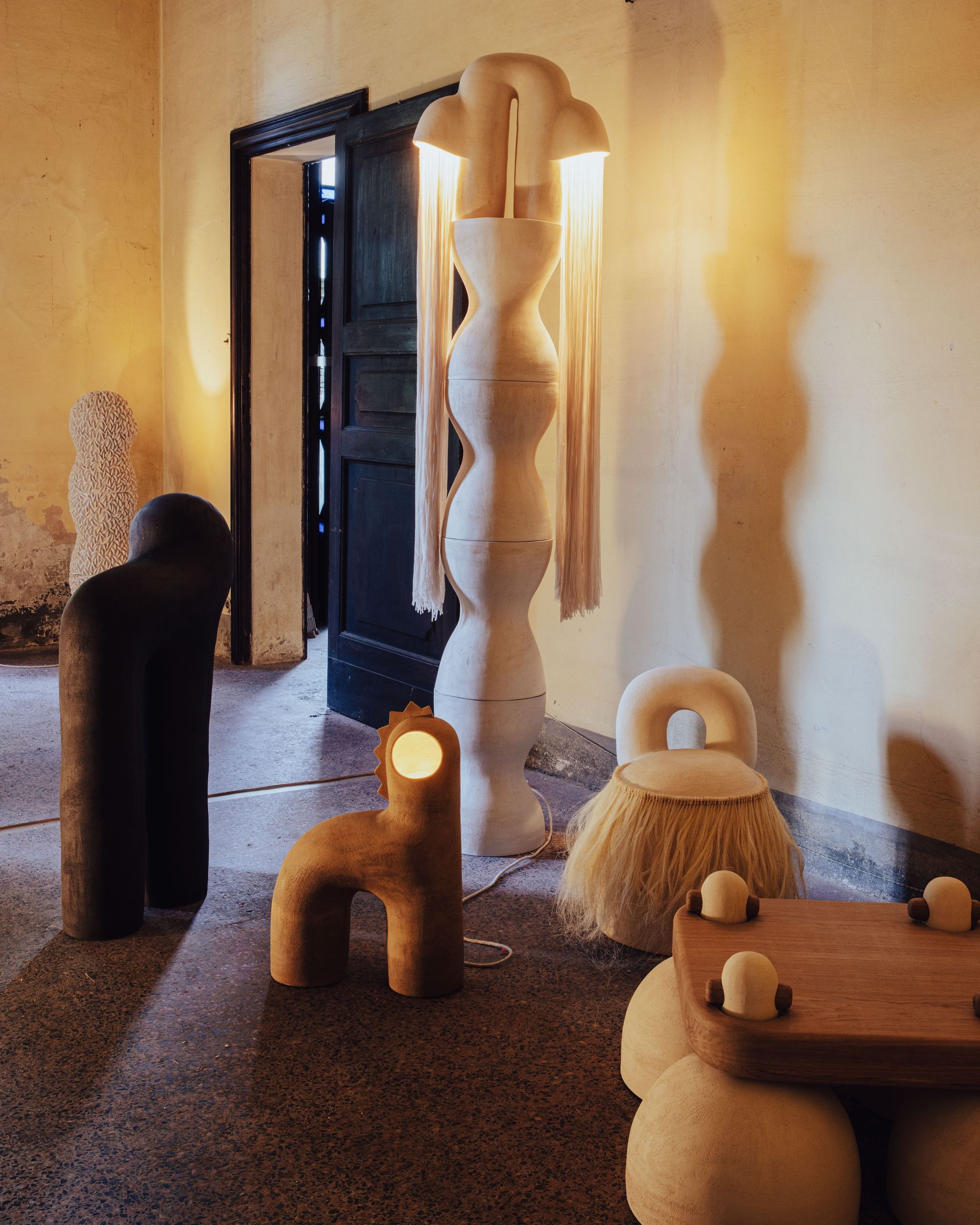
Elisa Uberti, Horizons Liquides. Photo by Piergiorgio Sorgetti courtesy of Alcova Milano.
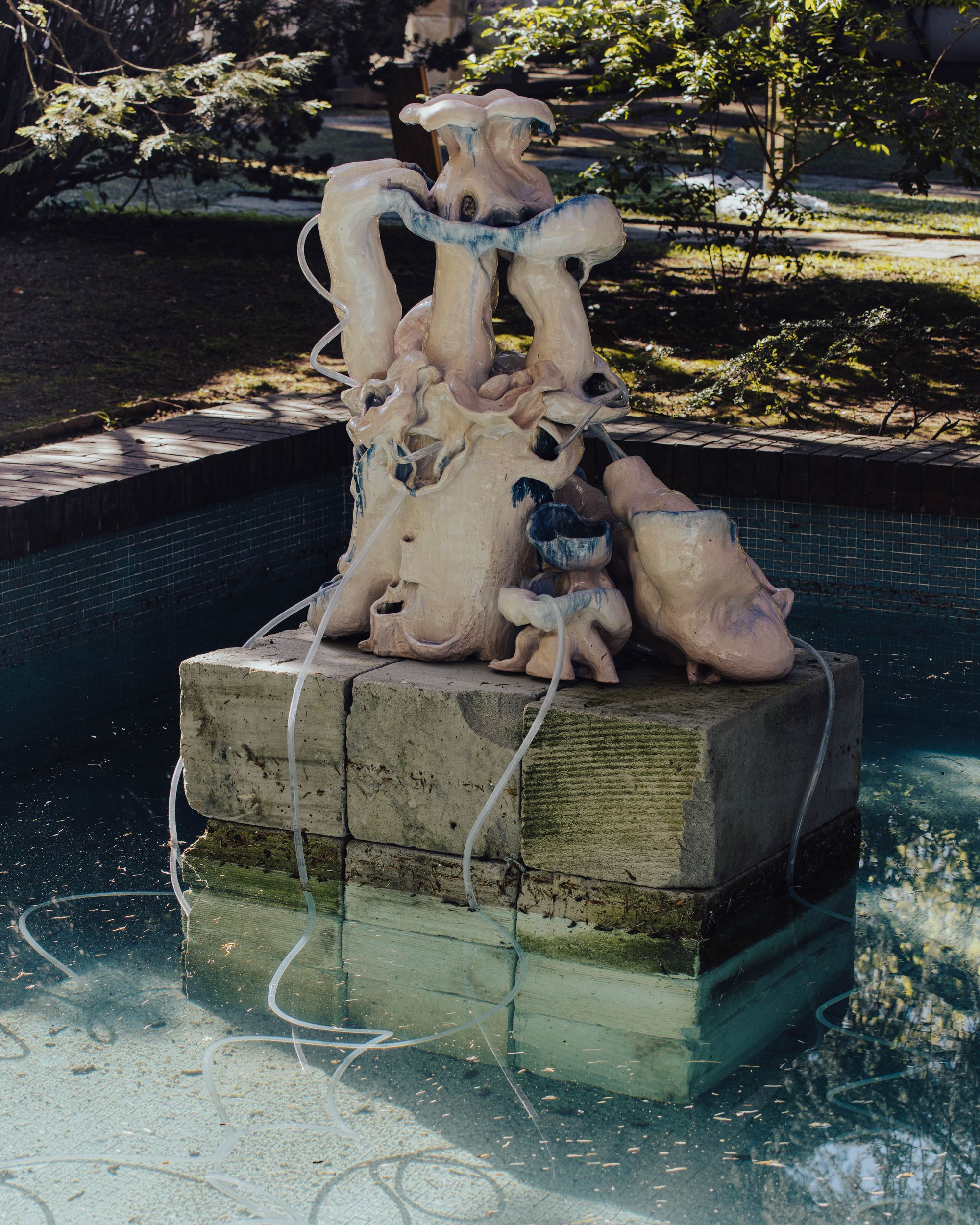
Brogen Berwick and Lana Bolkvadze, Sonic Currents. Photo by Piergiorgio Sorgetti courtesy of Alcova Milano.
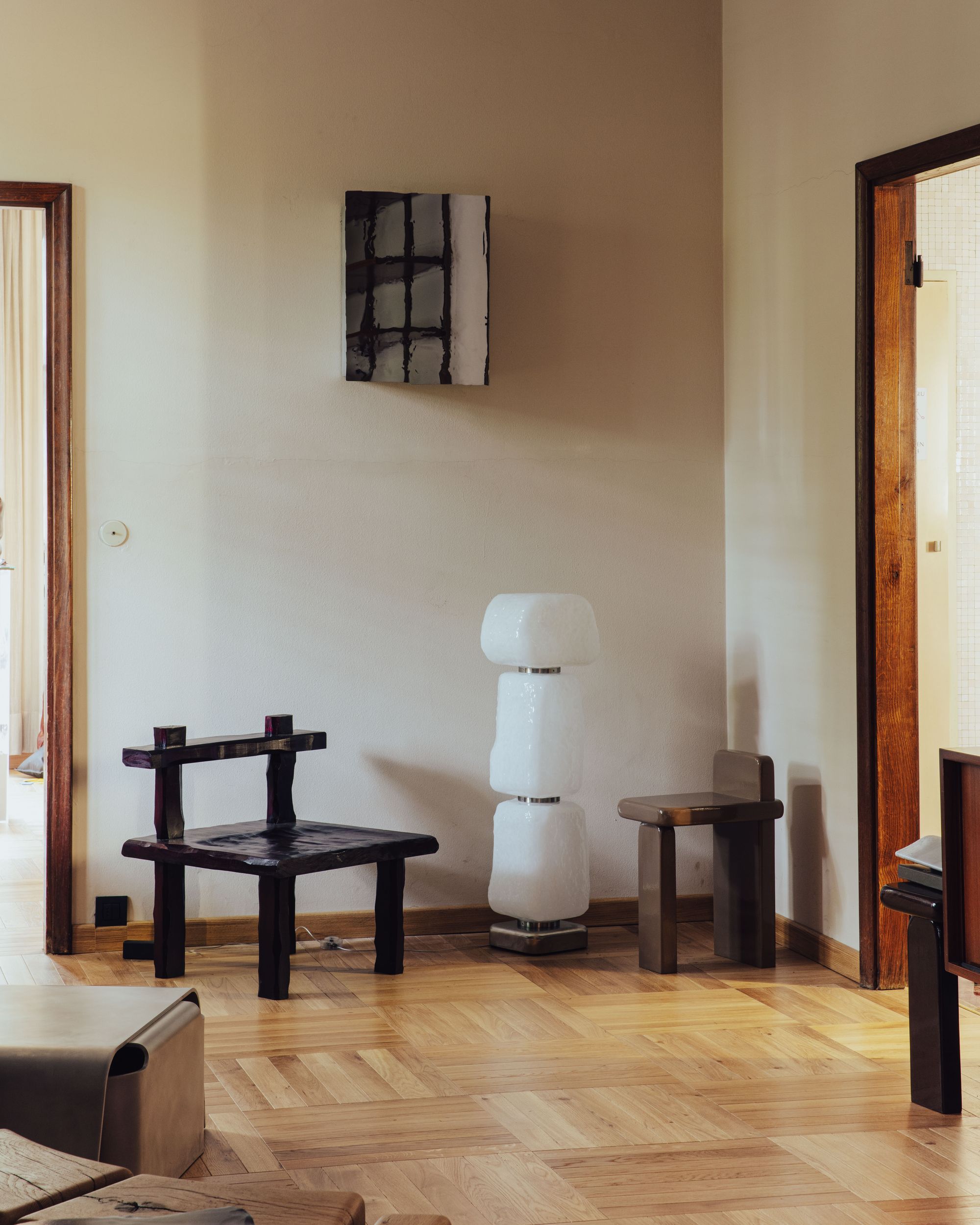
Destroyers Builders, Sculpting Archetypes. Photo by Piergiorgio Sorgetti courtesy of Alcova Milano.
In the south of the city, architectural products studio Dzek exhibited Flaxwood, a new material collaboration designed with Christien Meindertsma, whose design practice focuses on the life cycles of products and raw materials. “If we are really looking at how to improve architectural products to be sustainable and fully renewable, linoleum is an almost perfect product,” says Dzek founder Brent Dzekciorius. “There is so much misunderstanding around it because linoleum has always been doing other things besides being itself. When it was invented in the 19th century it was about beauty and color, and then it evolved to be about mimicry.” In an installation put together by Dzek, Meindertsma, and architectural practice Arquitectura-G, Flaxwood shows the potential of the material when it is given room to appear and behave according to its essential qualities — as an inherently renewable, biodegradable material. Flaxwood tiles were laid across a staircase that ran from floor to ceiling, with an almost golden textured haze. “It is an honest expression of the ingredients that are essential to making it,” says Dzekciorius. “We are not trying to force our aesthetic will onto it. We are trying to un-design what has been done, and reset.”
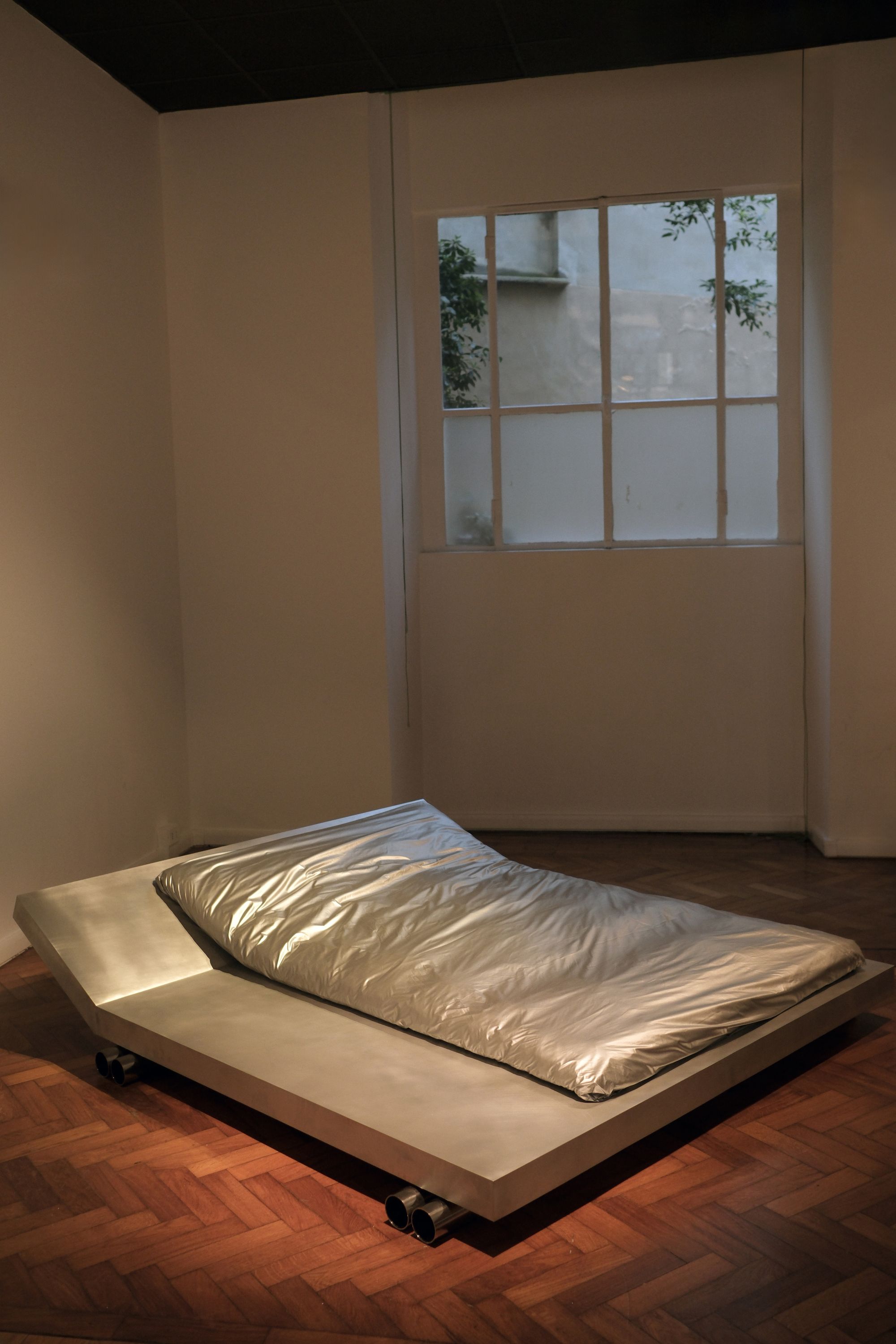
Installation view of Rooms Studio’s Bedroom. Photo by Levan Maisuradze courtesy of Rooms Studio.
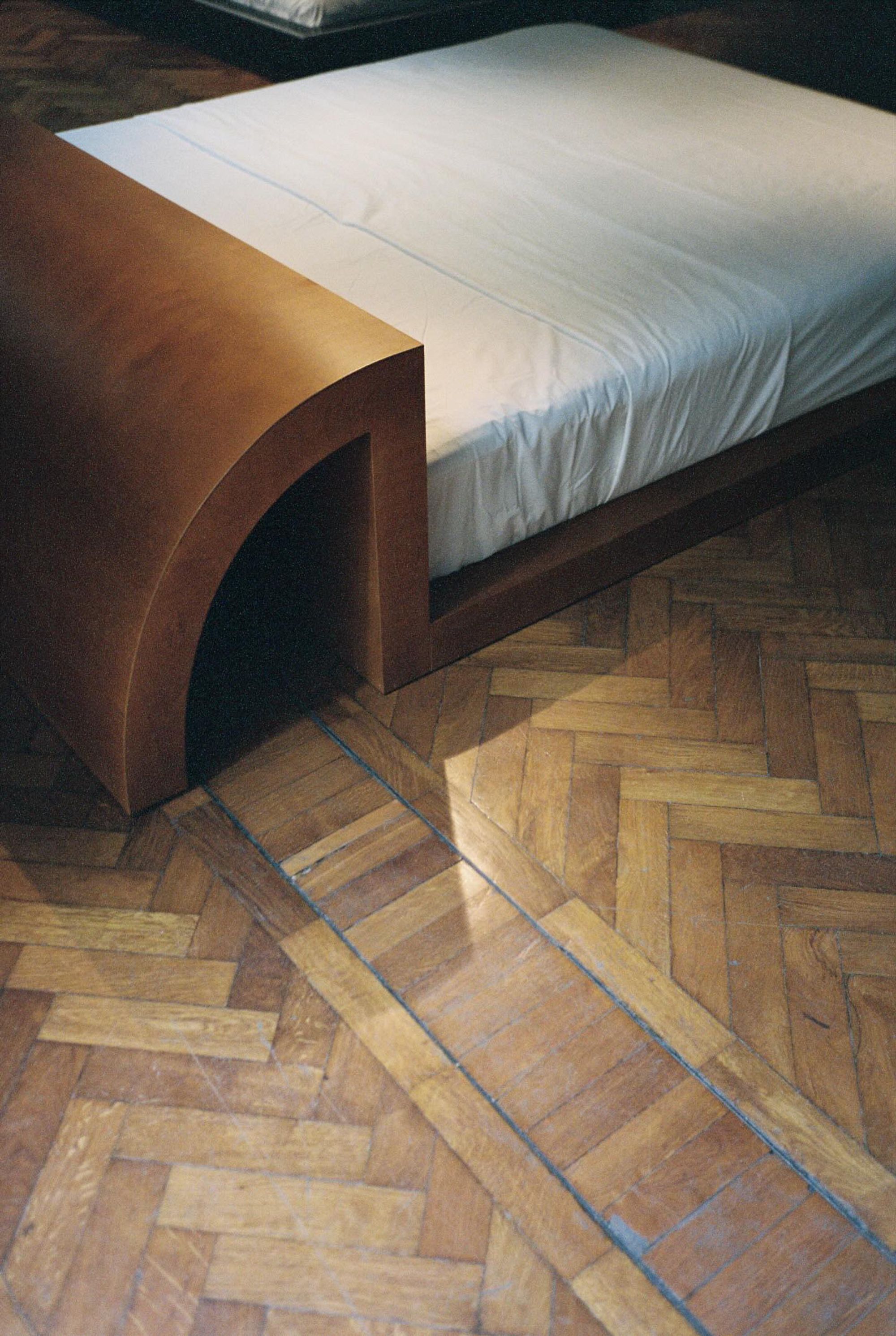
Detail view of Rooms Studio’s Bedroom. Photo by Grace Rose Watts courtesy of Rooms Studio.
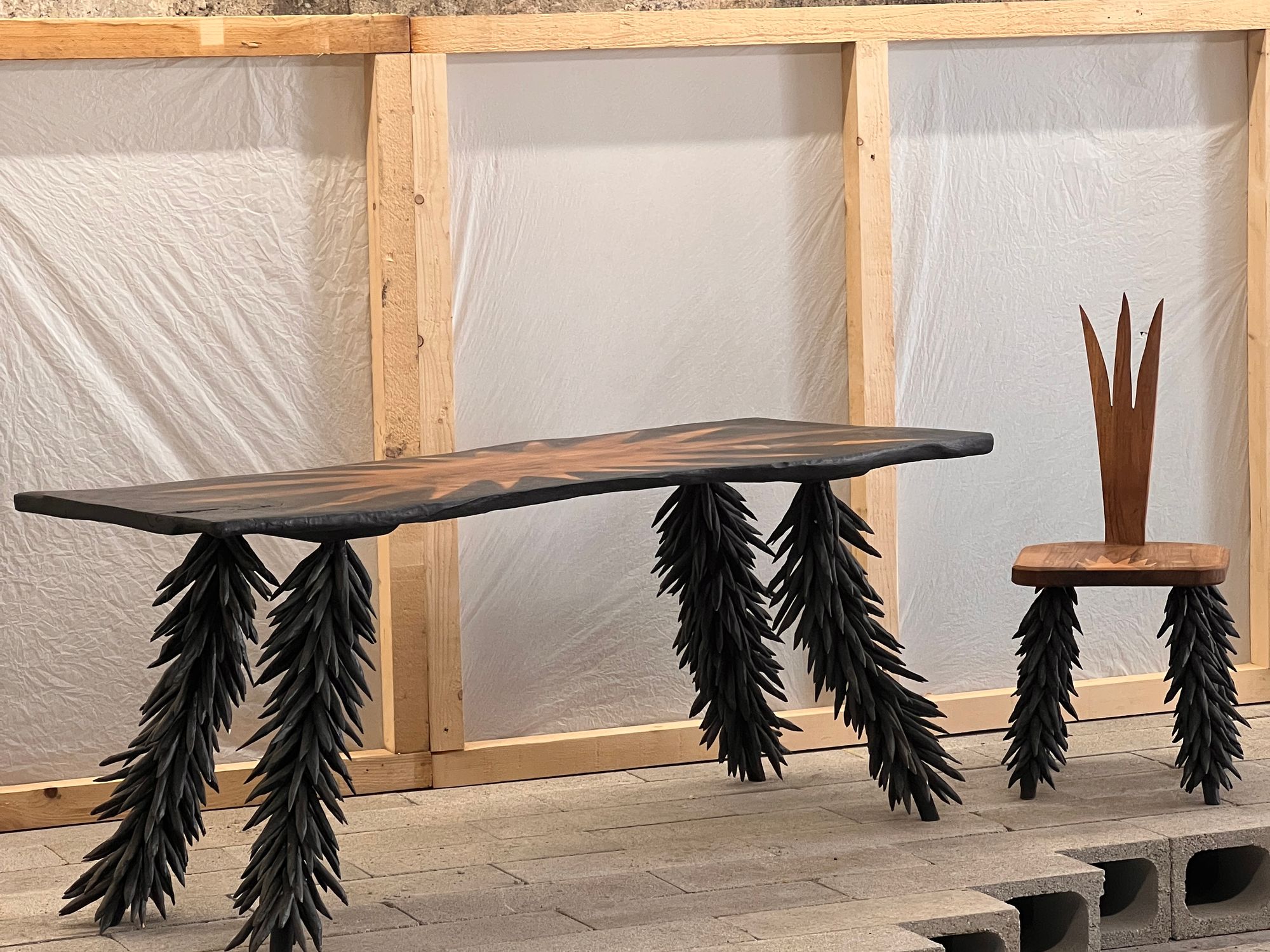
Garbage Kids, Spiky Table and Chair. Photo by Nika Gabiskiria courtesy of Garbage Kids.

Garbage Kids exhibition in collaboration with Dropcity. Photo by Nika Gabiskiria courtesy of Garbage Kids.
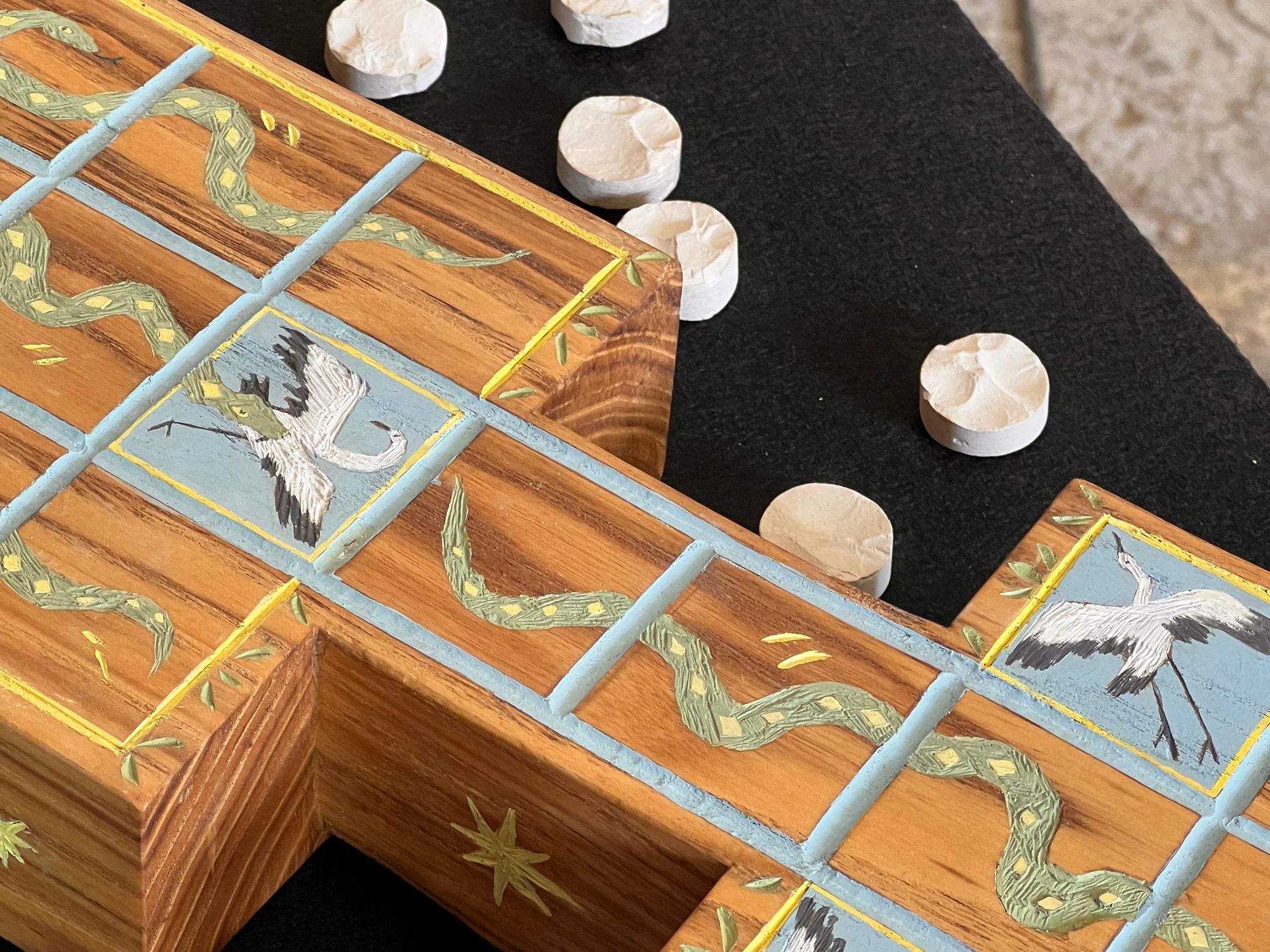
Garbage Kids, Royal Game of Ur. Photo by Nika Gabiskiria courtesy of Garbage Kids.